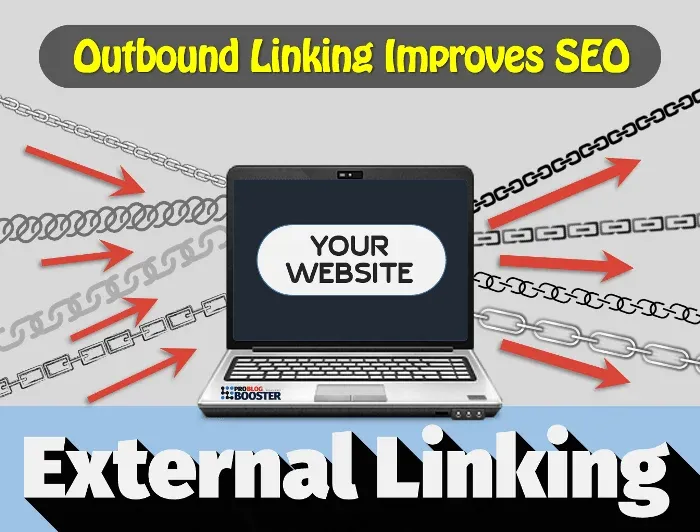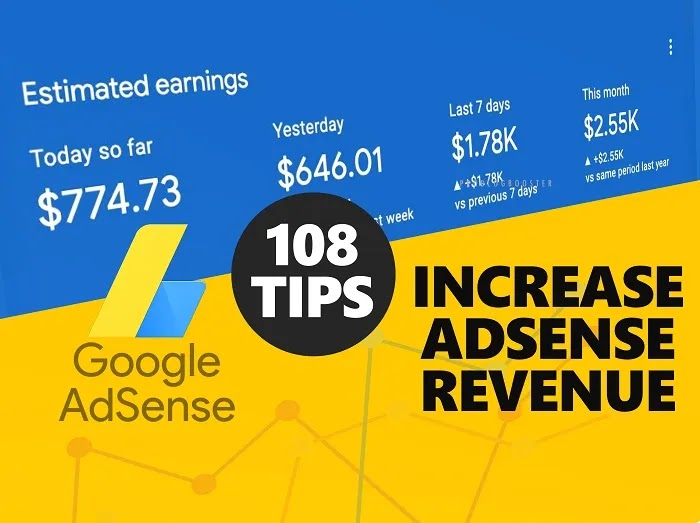The article discusses Jasper AI, transform the way you create content with Jasper AI! Discover the power of artificial intelligence in writing with its AI-powered content creation service. Create high-quality, original content for your blogs, business, or personal needs in a matter of seconds. With user-friendly interface and affordable pricing, Jasper AI is the perfect tool for enhancing your writing skills and improving productivity. Check out here for a comprehensive review and real-life examples of using Jasper AI.
[17 Factors] On-Page SEO Checklist 2025 To Dominate SERP & Rank Higher
On-Page SEO Checklist —
To keep you updated, I have just published the SEO summary of last 5 years where you can read; I Spent $1800 Hiring SEO Experts And Here Is What I Learned | Learn Advanced SEO. Every Internet-related object relies on one or more search engines as the way of bringing visitors to its real web page. We've all heard at least a million times about Search Engine Optimization [SEO] as a way of improving the rating when it comes to achieving the best possible position in a search result for a particular keyword. Previously I have shared, Top 15 Ways How I Get 472,764 Organic Visits Per Month | Build Website Traffic that shows, all I used to follow SEO checklist & it helps to drive massive traffic to my blogs.
As a rule of thumb, as the best SEO examples the first thing that comes to mind when planning your SEO page efforts are building a respectable and proper backlink portfolio - inbound links from external domains that point to your homepage or a page within your website. The local SEO marketing and local SEO services usually used to find out your on page SEO report to determine your needs and online SEO requirements. Also as a rule of thumb, internet marketers will often prioritize this type of activity & on page SEO tutorial since it requires little to no previous knowledge of web technology and SEO on-page optimization. But when it comes to achieving the best possible results that make you listed in best SEO websites, one must always start by cleaning one's own house.
Here is a checklist of the key things you have to keep in mind about on-page SEO optimization before even thinking of off-site optimization. Learn SEO strategies and techniques & how to increase SEO without any SEO company. Your every web pages and your site must get that high ranking in SERP with high-quality content by using quick best SEO optimization practice basics.

On-Page SEO Checklist
When it comes to optimizing your website for search engines, an On-Page SEO Checklist is a must-have tool. This checklist includes important elements like keyword research, meta tags, URL structure, content optimization, internal linking, and more. By following this checklist, you can ensure that your website is well-optimized for search engines, leading to improved visibility, higher rankings, and increased organic traffic. Boost your website's SEO performance with the comprehensive On-Page SEO Checklist for better online presence and success.In case, you are in search of what is search engine optimization ranking and why is it important? then, recently I have published; Top 6 On-Page SEO Factors To Consider Before Building an SEO Optimized Web Page | Web Content Optimization in the SEO category.
However, to improve SEO ranking much more, today I'm are going to discuss the On-Page SEO Checklist which is one of the major factors you can't ignore to optimize search engine & to build a perfect SEO page that forces the search engine to index it quick in SERP.
Also read; SEO Guide: 16 Ways To Quickly Improve SEO Ranking That’ll Generate Huge Traffic To Your Site
What is on-page in SEO?
On-page SEO (also called On-site SEO) is the practice of optimizing webpages and their content for search engine rankings and users to drive organic traffic. On-page SEO techniques include optimizing title tags, headlines, HTML tags, Meta tags, descriptions, content, images, internal links, permalinks, keywords, URLs, and much more.Why is on-page SEO important?
The main purpose of on-page SEO is to make your website and its pages more visible on search engines like Google, Yahoo, Bing, DuckDuckGo, etc. On-page SEO helps search engines crawler to determine the web pages and their content. Google is regularly updating its search algorithm to serve better & proper results to relevant users. Many of the elements Google uses to rank websites by using on-page factors.Keyword optimization: targetting highly-effective SEO keywords

1. Title
Start your post titles with the right search engine keywords you want to be ranked for. If your intention is to write an article focused on On-page SEO, the title should start with On-page SEO.Title is the most important factor in SERP, recently I have published to revealing 15 Tips For Writing Catchy Headlines & Blog Titles That’ll Grab More Attention that will help to write better and SEO-friendly titles for your blog pages.
A 'SEOMoz' study has clearly shown that the position of the highly effective SEO keyword in a title plays as a ranking factor - and having the keywords in the middle or in the back caused the results to rank lower.
You must know 501 Most Popular Blog Title Ideas & Headline Types That’ll Work
You can also read Online META Tag Generator #1 Free SEO Tool For Website | SEO Meta Description Tool for adding Meta Tags to each page.
2. SEO-friendly permalinks

Avoid horrible URLs at any costs, for.ex. yourdoman(.)com/p=4452368, since Google stated that first 3-5 words in a URL are given the most weight. So it's better to change your permalinks for SEO Friendly URLs.
You would like to read; Top 9 Best Link Building Tools for Better SEO | Improve Your Search Rankings
Check out; Why Meta Elements are Important to Improve Search Engine Ranking [PageRank]
Content optimization & Search Engine Success Factors

1. Headline tags
Most popular CMS platforms, like WordPress, automatically embed the title into the H1 tag (i.e. headline) but be careful of this, since some blogger templates and WordPress themes override this function.Always double check in the code if the H1 tag is added to your title. Your title should be in 'H1' tag whereas subheadings are in 'H2' tags.
2. Keyword placement
Don't forget to implement the keyword in the first 200-350 words of the article.Having a keyword in the first paragraph gives a signal to the search engine that the content is actually about the keyword.
You must know; 5 Reasons, Why Keywords Are So Important for SEO Optimization.
3. Outbound links
Using quality backlinks to relevant sources and authority sites such as .gov, .org sites or Wikipedia links helps to improve your PageRank.Boosting traffic, SEO enhancement, branding, increase domain authority, these are the major advantages of implementing Backlink Strategy. You must read; 215 Verified Backlink Websites List and DoFollow Forums to Increase DA & Traffic to understand the building backlinks for your blog is not only help you to get a higher click-through rate (CTR) but also boost your search listings.
You also requred to know; Top 10 Effective Strategies To Increase Domain Authority Fast, and Why It Required?.
4. Multimedia
Why your visitors bounce from your website or business blog? Written content text can’t always get you far enough. Enriching your content with multimedia such as images, videos, and graphs can greatly influence the bounce rate of your site and increase the time spent by visitors on your site.You must know; Top 15 SEO Image Optimization Tips for Search Engine Traffic
5. Headline modifiers
Using title modifiers such as "Fix", "Best", "Tut", "Popular", "How to", "Guide", or "Review" can help you rank higher for the long tail versions of your keywords.If you used to read the catchy advertising headlines examples you will find that the headlines are what sell your quality content. Your post headlines are representatives of the contents you have written on the page.
Your headlines lead your content in search engines (SERP).
The catchy newsletter titles always impact and convert your searcher into the reader.
6. Length of the Content
Although still debatable, the length of the content can be used to determine the search rank.The absolute minimum word count recommended in order to achieve any form of quality is 800 words, but there are studies claiming that you should aim for at least 1500-1800 words when targeting very competitive keywords.
RECOMMENDED: 100+ Best Top Working SEO Tips To Rank Higher in Google Search Results | Actionable Top SEO Tips
Related; 121 Killer Blogging Tips From Blogging Experts To Beginners
Optimize web pages for SEO to rank better in Google SERP

1. Speed, give me what I need
If your site loads more than 3 seconds, you are much more likely to lose your visitor. Not only that, but loading speed is the most important ranking signal for most search engines.You must improve the loading speed by compressing your multimedia, choosing a good web hosting plan, using a CDN (content delivery network) etc.
Read how to use CDN in blogger blog to make blog to load faster.
2. Social sharing buttons
Online presence is almost nothing without good social media coverage. Social shares are also an important ranking signal, and prominent and well-designed social sharing icons can help increase the social shares up to 700%.Read how to use Full CSS3 Optimised Shocial Sharing widget to prevent blocking of page loading.
3. Cut down the bounce rate
A bounce is an occurrence of a visitor quickly leaving your site. That might happen for a number of reasons and Google uses Google toolbar, Chrome browser, and Google Analytics data to control and analysis the bounce rate of your every web page.To lower your bounce rate, you could work on improving the internal link structure on your site, writing a good copy, and investing in a clean site theme that would work in tone with your branding design.
A guide that explains the top 5 reasons people bounce your site is published that will help you fix your bounce rate & increase user engagement on your blog. Both of these are two important interaction-based ranking signals for Google.
Also read; Hashtag Engine Optimization [HEO]: Everything You Want to Know | Future of SEO
4. Sprinkle the LSI Keywords
These are the keywords that are related to the keywords you are searching for and can be found at the bottom of your Google search page.LSI keywords (Latent Semantic Indexing) are synonyms used to define a page’s relevancy, and possibly even quality. You required to know current SEO techniques which help you understand what are LSI keywords used for & how to find it for better SEO & drive more organic traffic to your website.
You must read; LSI Keywords: How To Boost Onpage SEO For Ranking & Traffic
5. HTML stuffed content
Sometimes the Google crawlers have greater difficulty on crawling when looking at what is relevant or what is not; since they spend a lot of time roaming through your HTML code. For example, having a paragraph style or inline group tag that repeats itself each time you enter a different piece of code can work very negatively towards the readability of your site.While designing your website you must choose SEO-Friendly themes that helps search crawlers to identify each part of your website & index it quickly in SERP.
Video: Complete On-page SEO Checklist - RANK ON GOOGLE
Frequently Asked Questions
On-page SEO includes optimizing various elements on your website to improve its visibility and search engine rankings. To do on-page SEO step by step, start with keyword research, optimize meta tags and URLs, create high-quality content, ensure proper internal linking, and optimize images. An on-page SEO checker is a tool that helps analyze and evaluate your website's on-page optimization. In 2025, on-page SEO focuses on user experience, mobile optimization, and high-quality content. The 80 20 rule in SEO refers to prioritizing efforts on the 20% of actions that yield 80% of results. The three most important things for on-page SEO are relevant keywords, high-quality content, and proper optimization of meta tags. The three C's of SEO are content, code, and credibility. The four pillars important in SEO are relevance, authority, user experience, and technical optimization. The topmost factor in on-page SEO is high-quality and relevant content.Please take a moment to read through our FAQ section for quick answers to common questions.
What does on-page SEO include?
How do you do on-page SEO step by step?
- Conduct keyword research to identify relevant keywords for your content.
- Optimize your page titles, meta descriptions, and URLs with targeted keywords.
- Create high-quality, unique, and engaging content that incorporates the identified keywords naturally.
- Use proper heading tags (H1, H2, etc.) to structure your content.
- Optimize your images by compressing them and adding descriptive alt text.
- Ensure your website is mobile-friendly and loads quickly.
- Implement internal linking to improve navigation and enhance SEO.
- Regularly update and optimize your content to keep it fresh and relevant.
What is an on-page SEO checker?
What is on-page SEO in 2025?
What is the 80 20 rule in SEO?
What are the 3 most important things for on-page SEO?
- Keyword optimization: Conducting thorough keyword research and strategically incorporating relevant keywords into page titles, meta descriptions, headings, and content helps search engines understand the website's relevance to user queries.
- High-quality content: Creating unique, valuable, and engaging content that satisfies user intent and provides comprehensive information helps improve search engine rankings and user experience.
- User experience and technical aspects: Optimizing website speed, mobile-friendliness, navigation, and internal linking enhances user experience and search engine visibility.
What are the 3 C's of SEO?
- Content: High-quality content that is relevant, informative, and engaging plays a crucial role in SEO. It should be optimized with targeted keywords and structured properly to improve search engine rankings.
- Code: The website's code and technical aspects, including proper HTML tags, meta tags, schema markup, and website speed optimization, contribute to better search engine visibility.
- Credibility: Building credibility through backlinks from authoritative and relevant websites, social signals, and positive user experiences helps improve search engine rankings and trustworthiness.
What 4 pillars are important in SEO?
- Technical SEO: It focuses on optimizing the technical aspects of a website, such as website speed, mobile-friendliness, crawlability, indexability, and structured data implementation.
- On-page SEO: This involves optimizing the on-page elements of a website, including keyword research, content quality, meta tags, headings, URL structure, internal linking, and image optimization.
- Off-page SEO: It involves building high-quality backlinks from authoritative websites, social media signals, and online mentions to improve a website's authority and reputation.
- User Experience: Providing a great user experience through intuitive navigation, fast page loading speed, mobile optimization, and valuable content helps improve search engine rankings and user satisfaction.
What is the topmost factor in on-page SEO?
What are the 5 on-page SEO parameters?
Bottom Line
If you're already doing, at least, a couple of these things, then your site might be on a good run. Do your best to implement as many of this advice and techniques before, or at least, simultaneously with your off-site SEO campaign.As you see, all you need is a bit of time, patience, and some skills with HTML to significantly improve your site's performance and boost your rankings in the process.
What do you think about new SEO techniques and trends and how you rank in search engines, do share your thoughts via comment section shown below.











